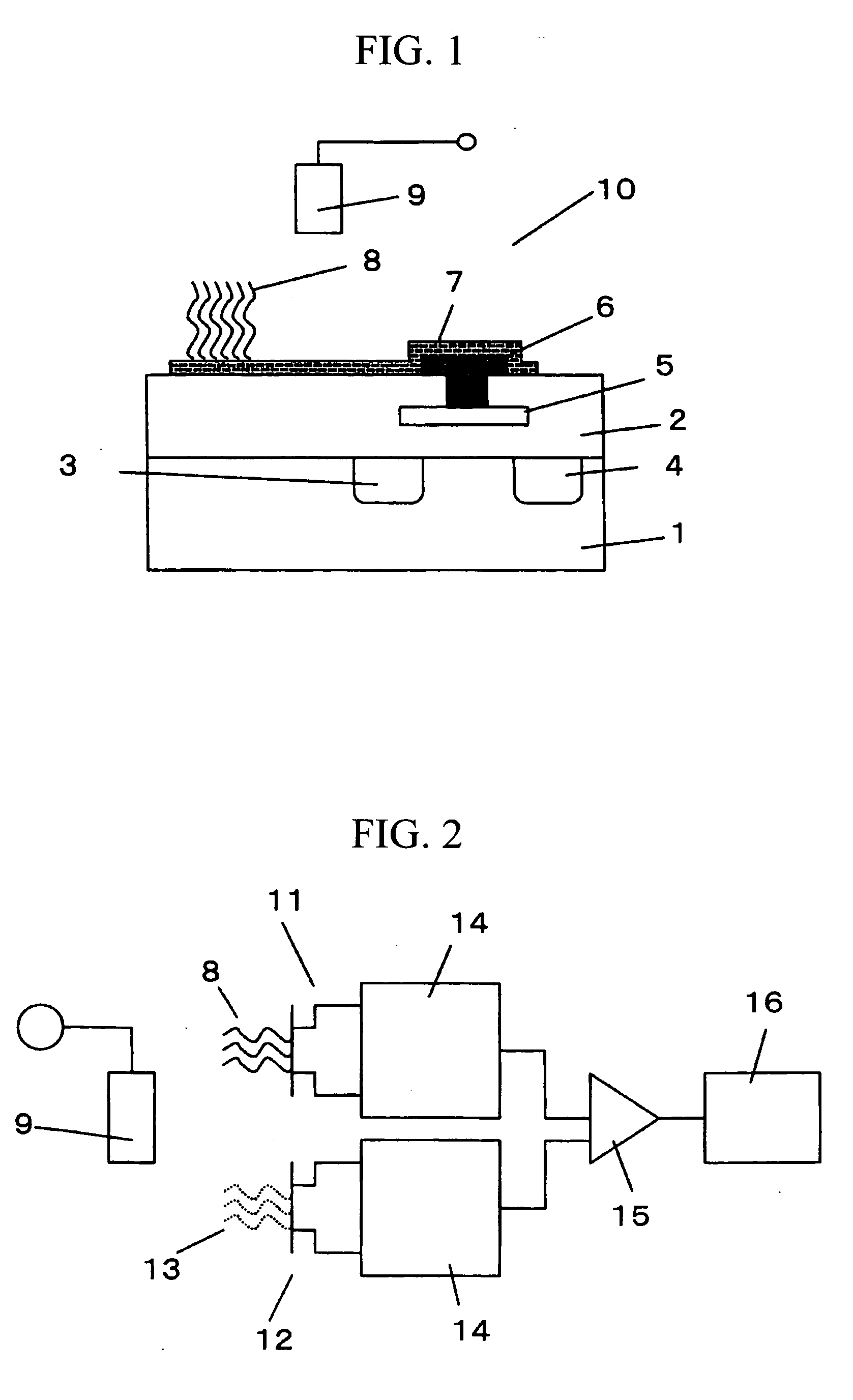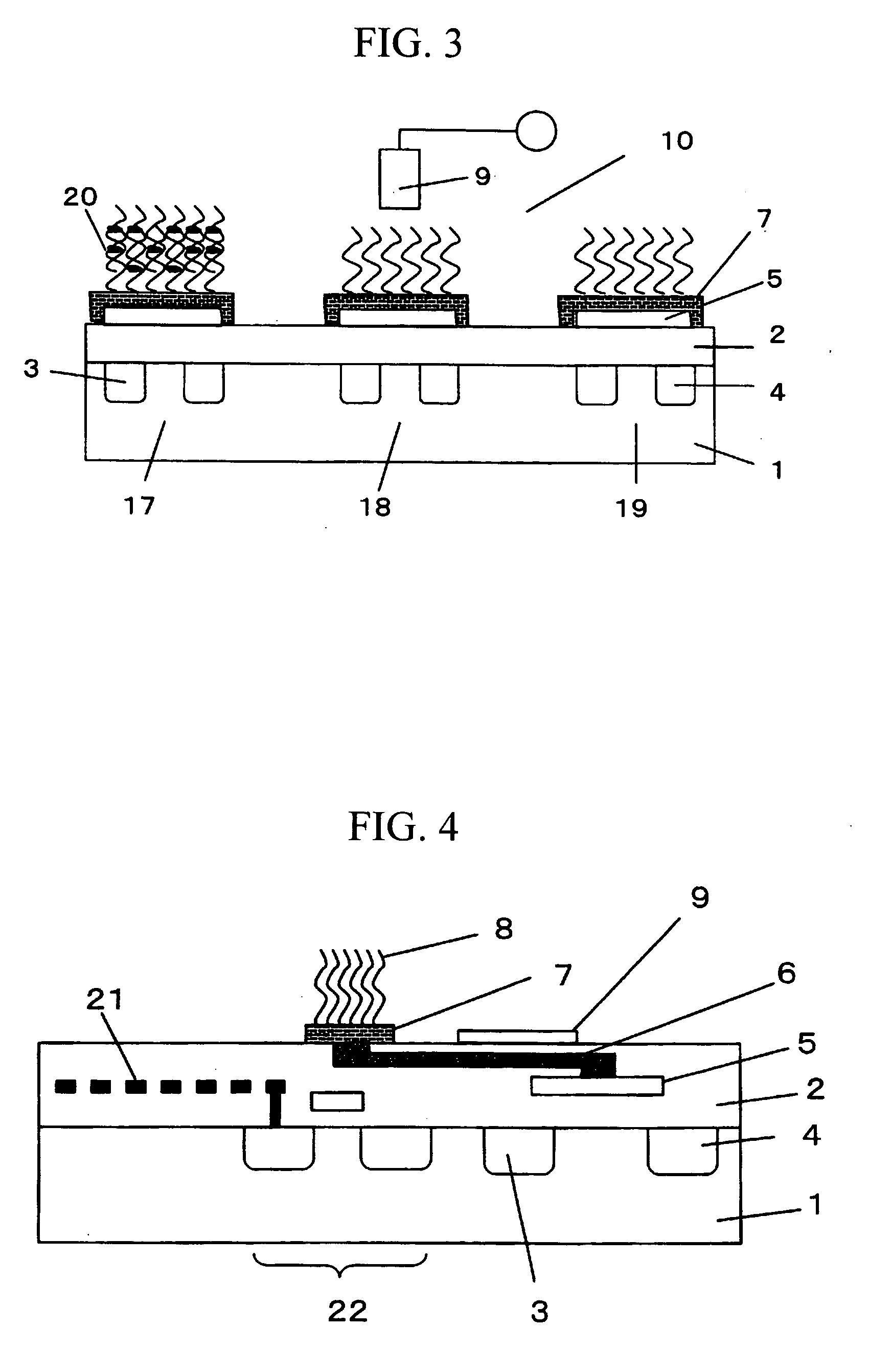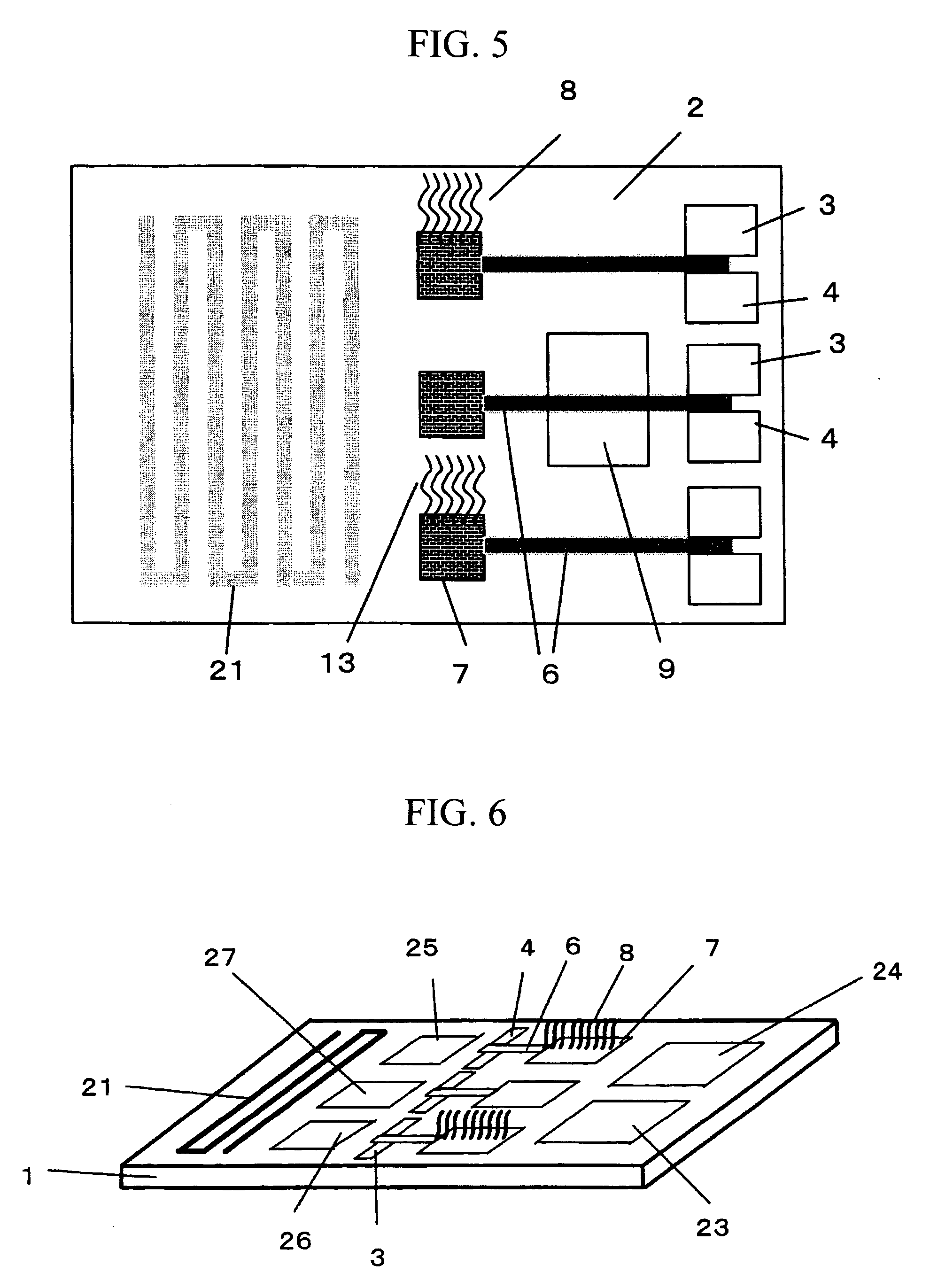Biomolecule detecting element and method for analyzing nucleic acid using the same
- Summary
- Abstract
- Description
- Claims
- Application Information
AI Technical Summary
Benefits of technology
Problems solved by technology
Method used
Image
Examples
embodiment 1
[0041]FIG. 1 schematically shows a cross section of a biomolecule detecting element (biomolecule detecting transistor) according to the invention.
[0042] An insulated gate field effect transistor is produced by forming a gate insulating film 2, a source 3, and a drain 4 on the surface of a silicon substrate 1, and providing a gate electrode 5 on the gate insulating film between the source and drain. On the surface of the gate electrode 5 is further formed an insulating film, such that the gate electrode 5 is embedded in the insulating film 2. A throughhole is formed in the insulating film 2, and a lead-out electrode 6 is formed using a conductive material and is placed in an electrical contact with the gate electrode 5. A floating electrode 7 is further formed on the surface of the gate insulating film and is placed in electrical contact with the lead-out electrode 6. A DNA probe 8 is immobilized on the surface of the floating electrode 7. The thus produced gene transistor is immers...
embodiment 2
[0056]FIG. 2 schematically shows a gene examination system in which the biomolecule detecting transistor according to the first embodiment is used. In this system, a reference transistor 12 is used in addition to the biomolecule detecting transistor 11 shown in FIG. 1, and a differential measurement is carried out using the two transistors.
[0057] On the surface of the gate of the biomolecule detecting transistor, a DNA probe 8 having a base sequence complementary to that of the target gene in the sample is immobilized. On the other hand, on the surface of the gate of the reference transistor, a DNA probe 13 having a base sequence different from the complementary base sequence of the target gene is immobilized. To stably measure the surface potential of the biomolecule detecting transistor and the reference transistor, a reference electrode 9 as a reference for potential measurement is provided. The surface potential of the biomolecule detecting transistor and that of the reference ...
embodiment 3
[0060]FIG. 3 schematically shows a cross section of another example of a measurement system employing the biomolecule detecting transistor shown in FIG. 1. In this measurement system, three FETs are integrated. A first biomolecule detecting transistor 17 is used for detecting a first target gene. A second transistor 18 is used for detecting a second target gene. A third transistor 19 is used as the reference transistor. On the gate electrode of the first and second biomolecule detecting transistors, a DNA probe having a base sequence complementary to that of the first and the second gene, respectively, is immobilized. On the surface of the gate electrode of the reference FET, a DNA probe having a base sequence different from the complementary base sequence of the first or second gene is immobilized.
[0061] The state shown in FIG. 3 is that where a sample solution containing only the first gene has been introduced into the aforementioned integrated transistors and hybridized to the t...
PUM
| Property | Measurement | Unit |
|---|---|---|
| Density | aaaaa | aaaaa |
Abstract
Description
Claims
Application Information
 Login to View More
Login to View More - R&D
- Intellectual Property
- Life Sciences
- Materials
- Tech Scout
- Unparalleled Data Quality
- Higher Quality Content
- 60% Fewer Hallucinations
Browse by: Latest US Patents, China's latest patents, Technical Efficacy Thesaurus, Application Domain, Technology Topic, Popular Technical Reports.
© 2025 PatSnap. All rights reserved.Legal|Privacy policy|Modern Slavery Act Transparency Statement|Sitemap|About US| Contact US: help@patsnap.com



